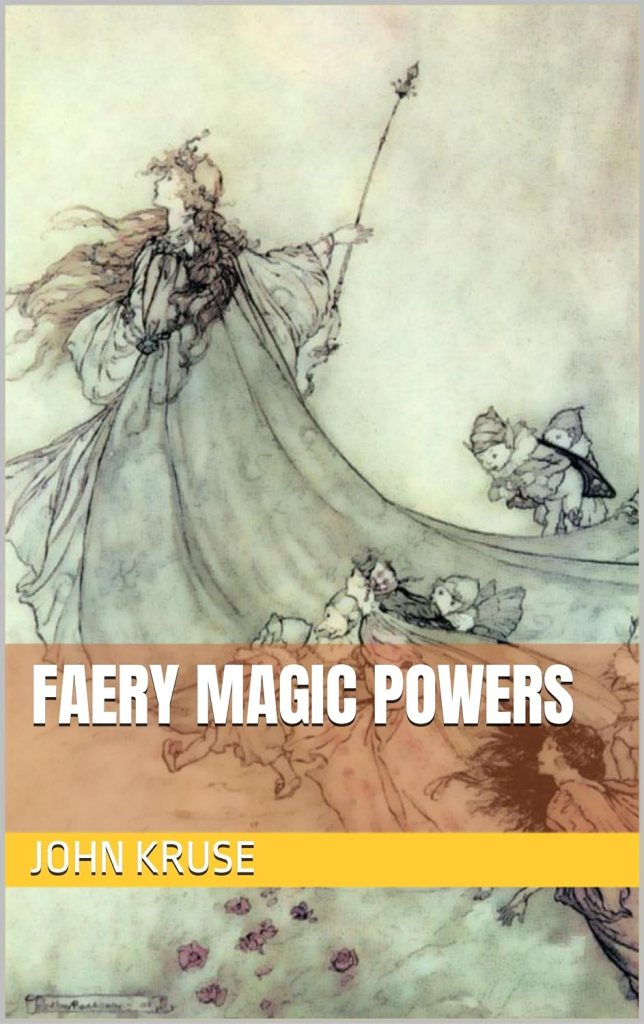
The Scottish folk tale Green Sleeves, like the related Nicht Nought Nothing, is mainly concerned with the common theme of completing a series of impossible tasks in order to avoid a serious, if not fatal, consequence. In Nicht Nought Nothing the trials are imposed by a giant and the eponymous hero is helped by the giant’s daughter. In Green Sleeves it is a wicked wizard, one of whose daughters helps the hapless human faced with these apparently insurmountable demands. This story is not really a faery tale as such, although the wizard’s nickname shows that he is dressed in green, which may well indicate some sort of supernatural connection. The story also involves guessing his name to avoid a dreadful forfeit, an element we know well from accounts about other faeries with secret names, such as Trwtyn-Tratyn and others.
What particularly interests me about the story of Green Sleeves, though, is the way in which the prince is assisted in his tasks by the wizard’s daughter, Blue Wing (she’s a sort of swan maiden who can shape shift into bird form). She helps him complete every challenge using “a magic box containing thousands of faeries.” Just as Green Sleeves and Nicht Nought Nothing have echoes of the labours of Hercules, so too here is there a memory of Pandora’s box. Yet this one is full of benign sprites and the outcome will be true love requited and a couple living happily ever after (eventually).
Several observations can be made about these faeries. One is that, apparently, they are verging on the microscopic in size, meaning that (to grossly misquote John Lennon), now we know how many fays it takes to fill a magic box (sorry). Whilst British folklore (generally) accepts that the majority of faery folk are about the size of children aged about eleven or twelve (albeit with many exceptions to this rule), we very rarely hear of them being reduced to the size of midges. This might well make us suspect that the influence of Pandora’s myth is especially strong at this point.
The second point is that these faeries are under the control of Blue Wing and will perform an endless range of arduous tasks- very quickly. Here, we are on much more familiar ground. In the Scottish account of The Red Book of Menteith, a faery queen had banished some troublesome elves into the Red Book. The condition was that they would only be released when the laird of Menteith opened the volume. Eventually, this happened by mistake and instantly the released faeries appeared before him demanding work. To be freed of them, he had to set them various impossible tasks to complete. Scottish faery lore also tells of a spell book owned by the Wizard of Reay. This seems to have had powers very similar to those of the Red Book. The wizard’s young servant peeked inside the tome and was instantly surrounded by little men demanding that he give them work to do. Just as in the previous story he first asked them to make ropes of heather, which they quickly did; then he asked for ropes of sand. When this proved impossible, they deserted the wizard.
The confinement (or laying) of faeries within some sort of object would seem to be quite a well-known idea in Scotland. Certainly, the imposition of apparently impossible tasks is a common theme of Scottish stories. Other examples include several tales that pair the faeries’ spinning skills with a task imposed upon a human that can be both impossible and fatal if it’s not completed. In many of these stories it’s a cruel human who sets the hopeless task and a fay who assists with it. For instance, in the legend of Habetrot, a girl must prove her skill at the spinning wheel or face some unspecified punishment from her mother. A faery woman named Habetrot (who’s been called the patron spirit of spinning) appears with a team of helpers and assists the daughter.
As I have described previously, construction, domestic chores and farming tasks (such as reaping) are especially those that faeries are charged to complete and which they can manage in an incredibly short period of time. The Irish writer Lord Dunsany, in his story ‘Carcassonne,’ wrote how that city had been built by elf-kings “on an evening in May by blowing their elfin horns.” Such is the power of elf magic, which can move and assemble materials with amazing speed and skill. Other Scottish stories tell of similar acts of transportation, as when supernatural beings construct entire buildings within the space of a single night: for example, the glaistig who built an impregnable fort (or a barn in some versions) or the hag, the Cailleach a’Chrathaich, who reroofed a home her companion faeries had damaged by making the roofing materials, wood and turf, fly back into place through the air.
Although I have often stressed how independent and distinctly un-helpful most faeries can be (brownies and hobs excepted), it will be clear that occasionally, some humans, through the use of superior magic powers, can constrain and control the faes to oblige them to apply their magic powers for the benefit of people- and to do so in record time.

